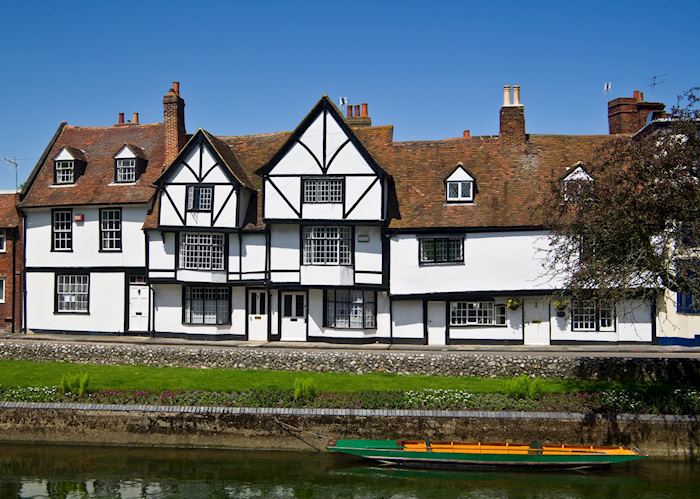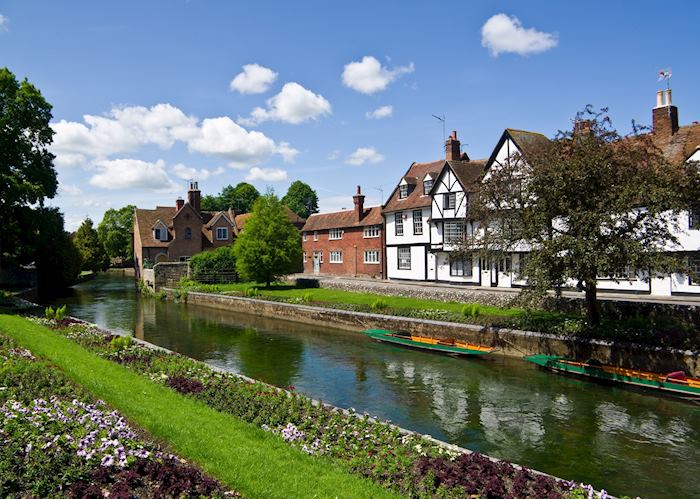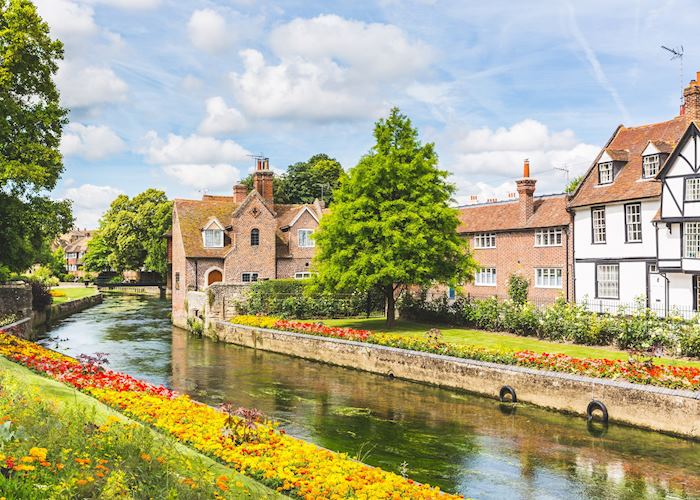Your guide will meet you outside the cathedral gate for the start of your walking tour and begin by leading you to the 12th-century infirmary ruins within the cathedral precinct. You’ll take a look around the cloisters as you make your way to the grounds of The King’s School, a prestigious independent school founded in the 6th century.
You then explore the narrow lanes and passageways of the old town, passing numerous historic buildings as well as the more contemporary Marlowe Theatre, named after Shakespeare’s contemporary and rival, playwright Christopher Marlowe, who was born in Canterbury. You’ll also get to see the ‘ducking stool’ outside the Old Weavers House, which was used to dunk suspected witches and over-talkative women in the river.
You’ll then return to the cathedral to meet a dedicated cathedral guide. Canterbury’s cathedral is one of the oldest and grandest in the United Kingdom. Together with Saint Augustine’s Abbey and Saint Martin’s Church, it forms a UNESCO World Heritage Site. Your guide will explain how there has been a church on the site since 597 AD, although the oldest remaining part of the building is the crypt, which dates back to the 11th century.
Inside, your guide will point out the most significant features of the building, from the 12th-century stained glass to modern windows by Hungarian artist Ervin Bossányi, created to replace those destroyed by bomb damage during World War II. You’ll also see an Antony Gormley sculpture in the nave, and a small chapel containing elaborately carved columns as well as the oldest Christian murals in England.
The cathedral is also home to the tombs of several notable historical figures, including King Henry IV and his wife, Joan of Navarre, and the Black Prince (Edward Plantagenet). However, the figure most famously associated with the cathedral is Thomas Becket, Archbishop of Canterbury in the 1100s. Murdered in his own cathedral by followers of Henry II, Becket was declared a martyr saint by the Pope just two years after his death.
Canterbury Cathedral subsequently became a popular pilgrimage site, with the hordes of visitors bringing vast wealth to the city. Although Becket’s tomb and shrine were destroyed during the Dissolution of the Monasteries, a candle burns by a modern altar in the location of his former shrine in the Trinity Chapel.
Your tour ends at the cathedral, but your guide will be happy to make recommendations for further places to visit.




